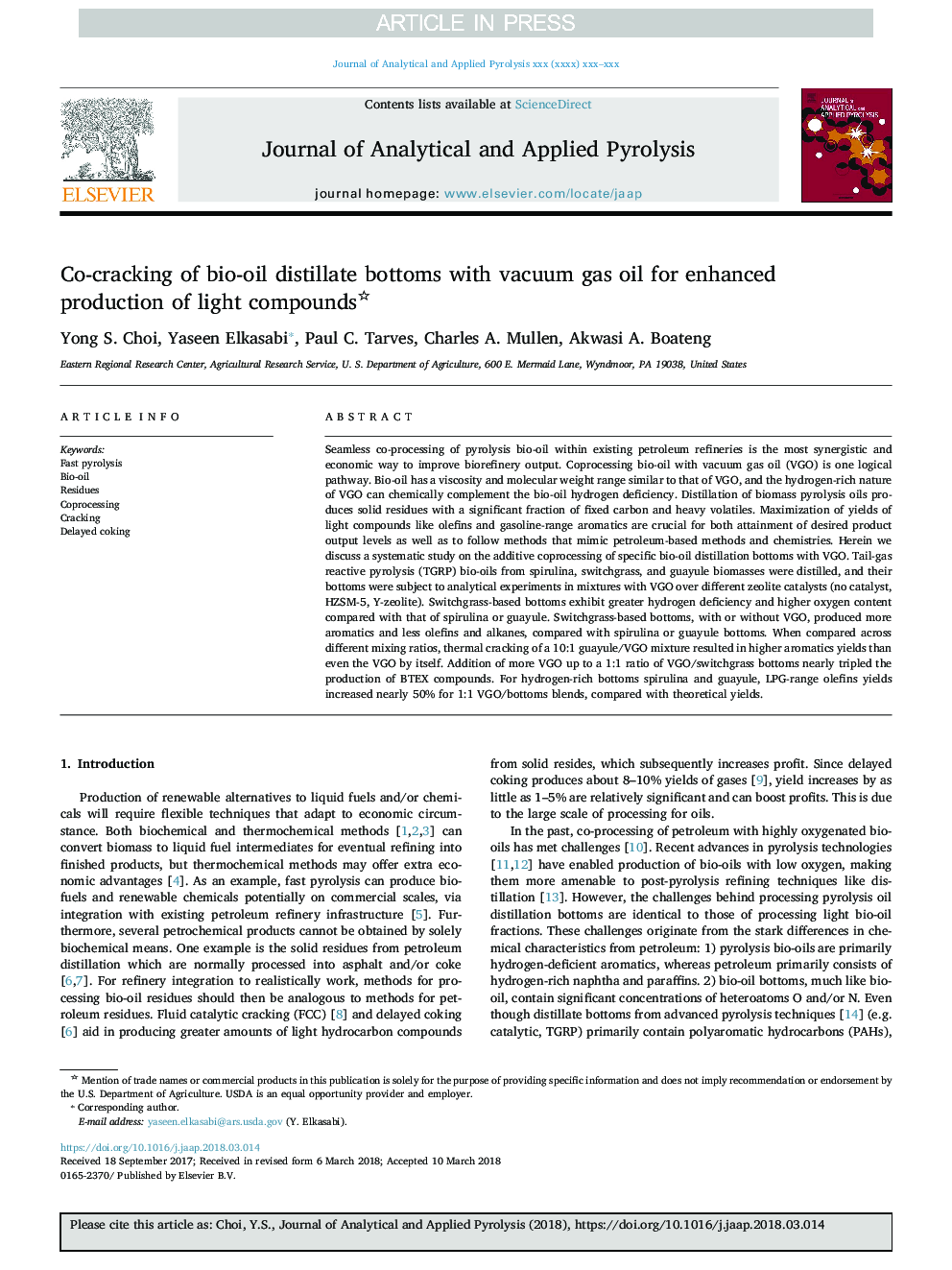| کد مقاله | کد نشریه | سال انتشار | مقاله انگلیسی | نسخه تمام متن |
|---|---|---|---|---|
| 7606289 | 1492945 | 2018 | 7 صفحه PDF | دانلود رایگان |
عنوان انگلیسی مقاله ISI
Co-cracking of bio-oil distillate bottoms with vacuum gas oil for enhanced production of light compounds
ترجمه فارسی عنوان
ترک خوردن پایه های تقطیر روغن زیتون با روغن گاز خلاء برای تولید ترکیبات سبک تر
دانلود مقاله + سفارش ترجمه
دانلود مقاله ISI انگلیسی
رایگان برای ایرانیان
کلمات کلیدی
موضوعات مرتبط
مهندسی و علوم پایه
شیمی
شیمی آنالیزی یا شیمی تجزیه
چکیده انگلیسی
Seamless co-processing of pyrolysis bio-oil within existing petroleum refineries is the most synergistic and economic way to improve biorefinery output. Coprocessing bio-oil with vacuum gas oil (VGO) is one logical pathway. Bio-oil has a viscosity and molecular weight range similar to that of VGO, and the hydrogen-rich nature of VGO can chemically complement the bio-oil hydrogen deficiency. Distillation of biomass pyrolysis oils produces solid residues with a significant fraction of fixed carbon and heavy volatiles. Maximization of yields of light compounds like olefins and gasoline-range aromatics are crucial for both attainment of desired product output levels as well as to follow methods that mimic petroleum-based methods and chemistries. Herein we discuss a systematic study on the additive coprocessing of specific bio-oil distillation bottoms with VGO. Tail-gas reactive pyrolysis (TGRP) bio-oils from spirulina, switchgrass, and guayule biomasses were distilled, and their bottoms were subject to analytical experiments in mixtures with VGO over different zeolite catalysts (no catalyst, HZSM-5, Y-zeolite). Switchgrass-based bottoms exhibit greater hydrogen deficiency and higher oxygen content compared with that of spirulina or guayule. Switchgrass-based bottoms, with or without VGO, produced more aromatics and less olefins and alkanes, compared with spirulina or guayule bottoms. When compared across different mixing ratios, thermal cracking of a 10:1 guayule/VGO mixture resulted in higher aromatics yields than even the VGO by itself. Addition of more VGO up to a 1:1 ratio of VGO/switchgrass bottoms nearly tripled the production of BTEX compounds. For hydrogen-rich bottoms spirulina and guayule, LPG-range olefins yields increased nearly 50% for 1:1 VGO/bottoms blends, compared with theoretical yields.
ناشر
Database: Elsevier - ScienceDirect (ساینس دایرکت)
Journal: Journal of Analytical and Applied Pyrolysis - Volume 132, June 2018, Pages 65-71
Journal: Journal of Analytical and Applied Pyrolysis - Volume 132, June 2018, Pages 65-71
نویسندگان
Yong S. Choi, Yaseen Elkasabi, Paul C. Tarves, Charles A. Mullen, Akwasi A. Boateng,
